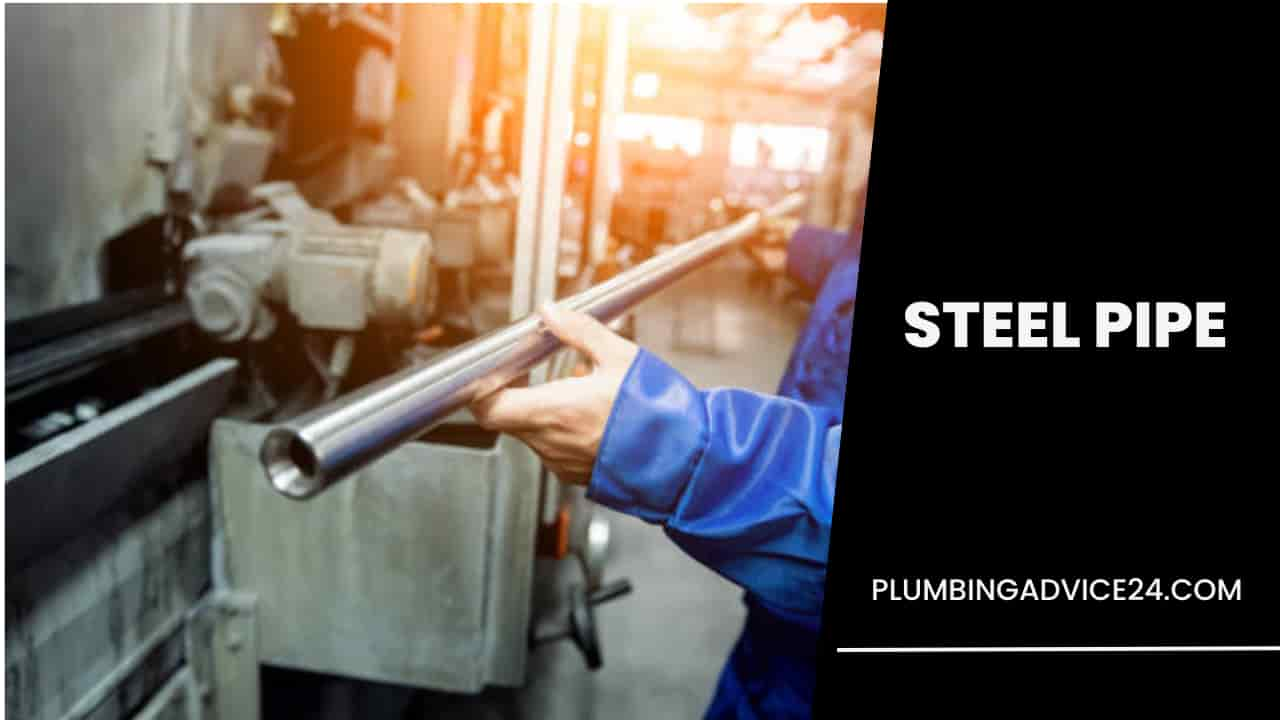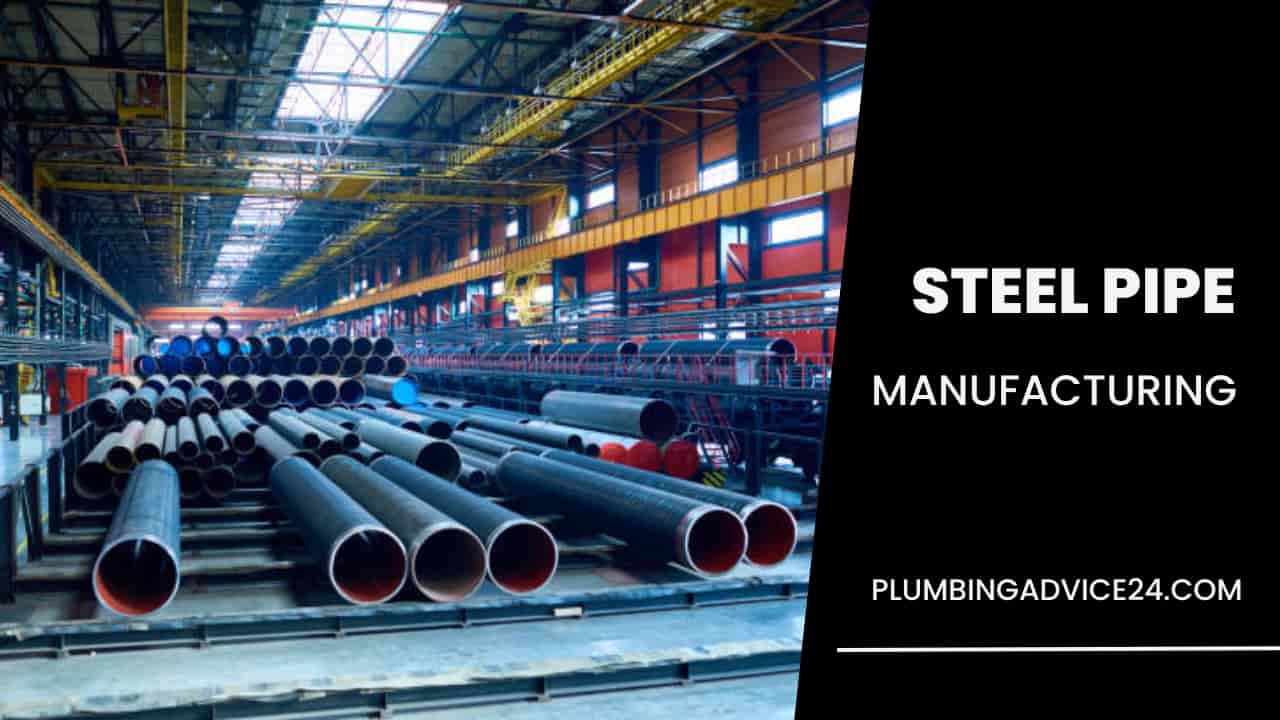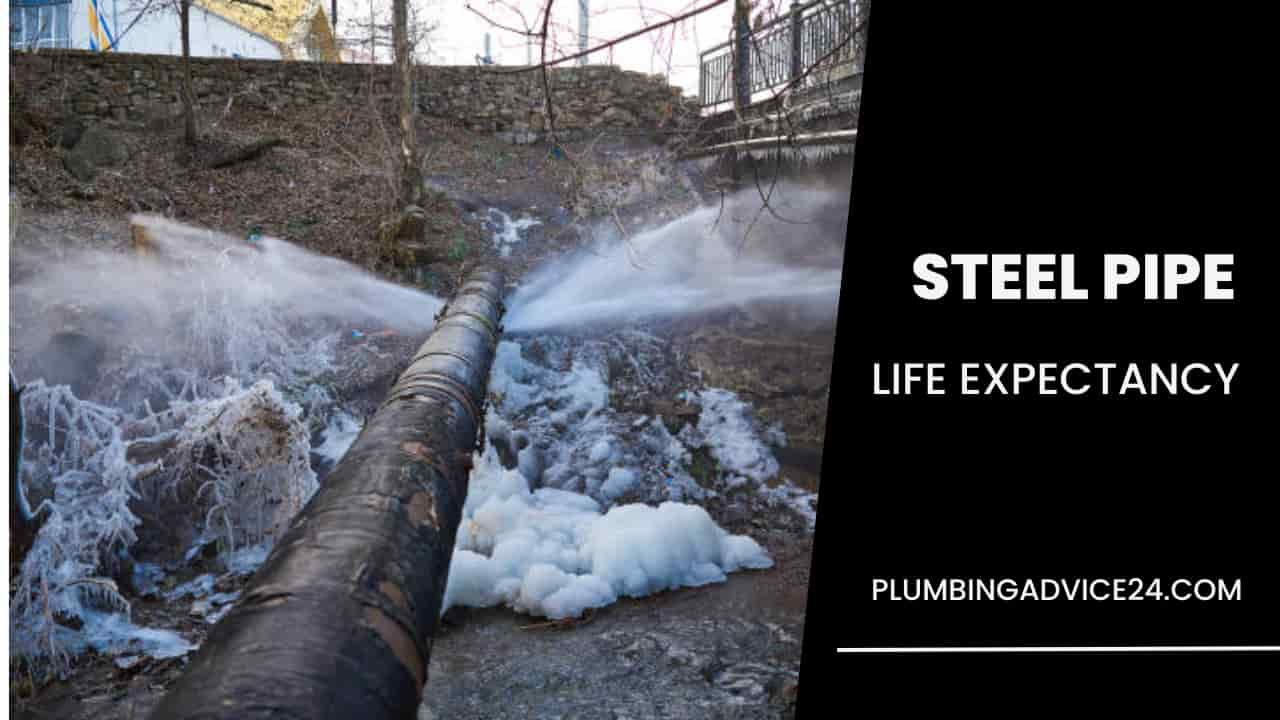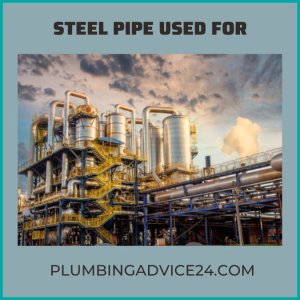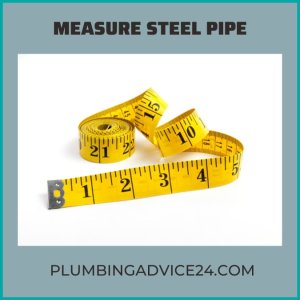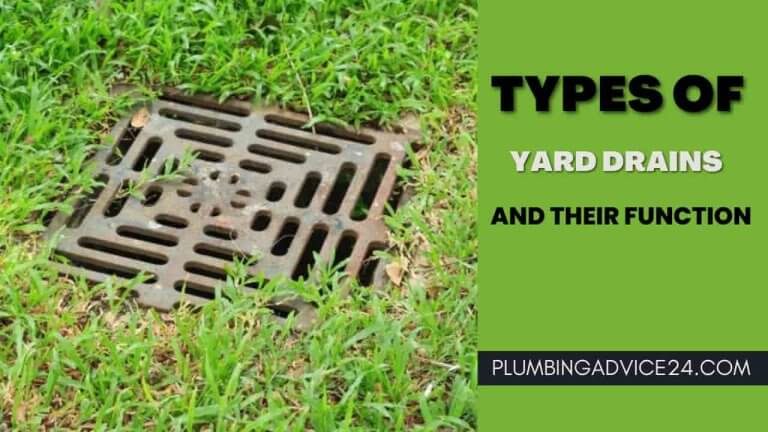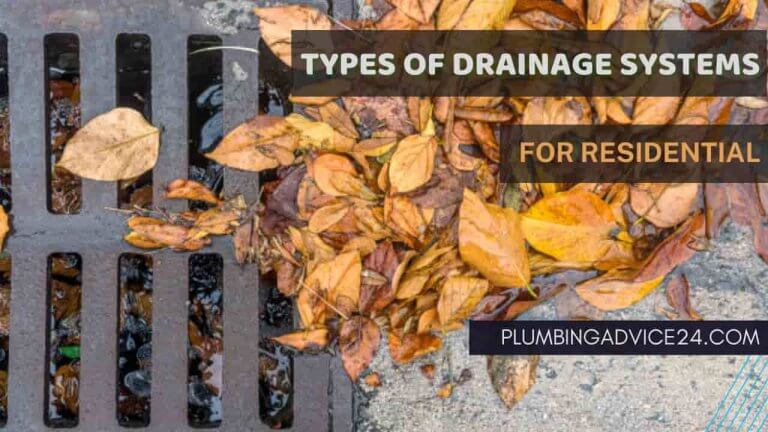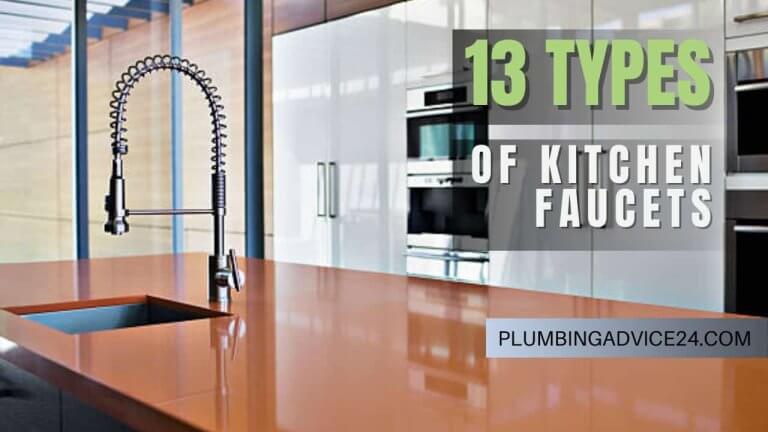Everything You Need to Know About Steel Pipe
Steel pipe is the type of metal pipe most commonly used in water distribution systems. This pipe is also used in pipelines for natural gas and sewage systems. Although comparatively expensive compared to other plumbing pipes, they are able to withstand higher pressures and are available in more convenient lengths.
Steel plumbing pipes can be easily welded, resulting in lower installation and transportation costs. These types of plumbing pipes are highly efficient and can be used in smaller diameters as required.
The pipes can be further melted down and turned into other useful materials in the industry. Additionally, these pipes’ high strength and resistance to damage caused by human error, tree roots, and extreme weather conditions make these pipes an ideal choice for most water supply and sewerage systems. Additionally, they are 100% recyclable compared to other pipe materials.
What Is Steel Pipe?
Steel pipes are cylindrical tubes made of steel that are used in many ways in manufacturing and infrastructure. They are the most widely used products produced by the steel industry. Pipes are primarily used to transport liquids or gases underground, including oil, gas, and water. However, different sizes of pipes are used during manufacturing and construction.
Steel pipe is sometimes joined using a threaded connection, where tapered threads are cut into the end of the tubing segment, joined by sealant thread sealing compound or Teflon tape, and then threaded into a corresponding threaded fitting using two pipe wrenches. Beyond the domestic or light commercial setting, steel pipes are often joined by welding.
Other variations of steel pipes include various stainless steel and chrome alloys. These are usually joined by TIG welding under high-pressure conditions.
How Is Steel Pipe Made?
Steel is used as the primary raw material in steel pipe manufacturing. Steel is mainly composed of iron. Other metals that may be present in the alloy include aluminum, manganese, titanium, tungsten, vanadium, and zirconium. Some final materials are used during production.
For example, the paint may be used if the pipe is coated. Generally, steel pipes are lightly oiled at the end of the production line. This helps to secure the pipe. While it is not actually part of the finished product, sulfuric acid is used in a manufacturing step to clean pipes. Steel pipes are mainly manufactured by two different processes. Seamless pipe manufacturing and Welded pipe manufacturing.
What Is the Steel Pipe Life Expectancy?
Steel pipes are cylindrical tubes made from steel that is used in many ways in manufacturing and infrastructure. They’re the most utilized product made by the steel industry. The primary use of pipe is in the transport of liquid or gas underground—including oil, gas, and water.
The life expectancy of steel pipe is 80 to 100 years, and it lacks the danger of leaving behind the lead in the water. Steel pipes are dipped in zinc to provide them with a layer of protective coating. This prevents corrosion and increases their lifespan.
Related Post : Types of Steel Pipes | Stainless Steel Pipe Vs Carbon Steel Pipe
What Is Steel Pipe Used For?
Steel pipes have many benefits, including their easy installation, long service life, and durability. The most common use of these pipes is for the transport of products because the material is well suited for long-term installations. It can be buried underground due to its hardiness and resistance to breakdown.
At once, steel pipe was the most popular choice for water supply and flammable gases. This pipe is still used in many homes and businesses to deliver natural gas or propane fuel and is a popular choice in fire sprinkler systems because of its high heat resistance.
In commercial buildings, steel pipes are used to deliver hot or cold water to heat exchangers, air handlers, variable air volume (VAV) devices, or other HVAC equipment. In addition, steel pipes are used in many industries.
Steel pipes are mainly used in the following industries.
- Construction
- Power plants
- Oil and gas industry
- Diary and food processing industries
- Modern architecture
- Shipbuilding industries
- Chemical industries
- Water treatment plants
- Synthetic fiber production
- Desalination
- Energy industries
- Agricultural industry
- Textile industries
How to Measure Steel Pipe?
Measuring the diameter of a steel pipe is very easy. If you have a caliper, you can measure the diameter of the direct steel pipe with it. But if you don’t have a caliper, you can also measure steel pipe with string tape or a ruler. All you have to do is the following steps.
Follow the below steps to measure steel pipe diameter by string method.
- Find the circumference of the pipe by wrapping the string around the pipe once. Mark the section of the string where it begins to overlap.
- Measure the length of the string wrapped around the pipe with a ruler.
- Divide the length by 3.143, and this is the outside diameter of your pipe. To find the nominal pipe size.
After finding the nominal pipe size, you should use the steel pipe size chart or steel tube size chart below. This chart is for both schedule 40 80 steel pipe dimensions.
The following table is for the steel pipe dimension chart.
| SCHEDULE 40 AND 80 STEEL PIPE DIMENSIONS | |||||
| NOMINAL PIPE SIZE | OUTSIDE DIAMETER | SCHEDULE 40 | SCHEDULE 80 | ||
| Wall Thickness | Weight Per Ft. | Wall Thickness | Weight Per Ft. | ||
| 1/8 | 0.405 | 0.068 | 0.245 | 0.095 | 0.315 |
| 1/4 | 0.54 | 0.088 | 0.425 | 0.119 | 0.535 |
| 3/8 | 0.675 | 0.091 | 0.568 | 0.126 | 0.739 |
| 1/2 | 0.84 | 0.109 | 0.851 | 0.147 | 1.088 |
| 3/4 | 1.05 | 0.113 | 1.131 | 0.154 | 1.474 |
| 1 | 1.315 | 0.133 | 1.679 | 0.179 | 2.172 |
| 1-1/4 | 1.66 | 0.140 | 2.273 | 0.191 | 2.997 |
| 1-1/2 | 1.9 | 0.145 | 2.718 | 0.200 | 3.631 |
| 2 | 2.375 | 0.154 | 3.653 | 0.218 | 5.022 |
| 2-1/2 | 2.875 | 0.203 | 5.793 | 0.275 | 7.661 |
| 3 | 3.5 | 0.216 | 7.576 | 0.300 | 10.250 |
| 3-1/2 | 4 | 0.226 | 9.109 | 0.318 | 12.510 |
| 4 | 4.5 | 0.237 | 10.790 | 0.337 | 14.980 |
| 5 | 5.563 | 0.258 | 14.620 | 0.375 | 20.780 |
| 6 | 6.625 | 0.280 | 18.970 | 0.432 | 28.570 |
| 8 | 8.625 | 0.322 | 28.550 | 0.500 | 43.390 |
| 10 | 10.75 | 0.365 | 40.480 | 0.500 | 54.740 |
| 12 | 12.75 | 0.375 | 49.560 | 0.500 | 65.420 |
How Much Does Steel Pipe Cost?
Stainless steel pipe and carbon steel pipe are the most common types of standard pipe used today. It is part of tubular goods manufactured according to various specifications and standards. Pipes are sold by “Nominal Pipe Size” in sizes from 1/8″ to 72″.
The two most common types of pipes are welded pipe and seamless pipe. Both are available in carbon steel and stainless steel. Welded pipe is also called ERW (Electric Resistance Welded) pipe. The most common specification for welded carbon steel pipe is A53.
Seamless pipe is made by a process that does not require welding. The most common specification for a seamless carbon steel pipe is ASTM A106B. Stainless steel pipe manufactured to spec A312. Stainless steel pipe is also available in both seamless and welded configurations. The most common stainless materials are 316 and 304.
The cost of steel pipe per linear foot is as follows. You can also get carbon steel pipe installation cost per foot from this table.
| STEEL PIPE PRICE LIST | ||||
| Nominal Size (Inches) | Wall (Inches) | Unit Weight (LB/Ft) | Pipe Price ($/Ft) | Installation Cost ($/Ft) |
| 2″ | 0.218 | 5.02 | 4.30 | 5.5 |
| 3″ | 0.216 | 7.58 | 6.50 | 6 |
| 4″ | 0.219 | 10.01 | 8.6 | 7.5 |
| 6″ | 0.219 | 14.98 | 12.8 | 9 |
| 8″ | 0.219 | 19.66 | 16.8 | 11 |
| 10″ | 0.25 | 28.04 | 23.9 | 13 |
| 12″ | 0.25 | 33.38 | 28.4 | 15 |
| 14″ | 0.312 | 45.61 | 38.8 | 17 |
| 16″ | 0.312 | 52.27 | 44.5 | 20 |
| 18″ | 0.375 | 7.59 | 60.1 | 25 |
Note:- This table shows the price of steel pipe and its installation cost separately; if you want to get the total cost, then you have to add up the pipe price and the installation cost.
Advantages of Steel Pipes
- Steel pipes are very strong. Steel tubing and pipes are particularly resistant to longitudinal compression but still offer better resistance to bending forces than flat sheet steel.
- Steel pipes are durable. These pipes will look and function the same in 20 years as they do today. The pipes will not bend and require much less maintenance than plastic pipes.
- Steel pipes are not solid cylinders of metal but have holes running their entire length – making them an excellent choice for protecting cables or carrying water and other liquids.
- Steel pipes have a low rate of corrosion. The metal will retain its rust-free appearance for many years, even if water is constantly inside the tube. The metal is unlikely to leach into the water, and the metal contamination rate for stainless steel is almost non-existent.
- Steel pipes look attractive and look like a modern, attractive decor. It is possible to expose the stainless steel pipes inside the building to add to the decorative beauty of the room.
- Steel pipes are highly efficient, and it is possible to use smaller diameter pipes made of steel than pipes made of other materials. The mass flow rate for stainless steel pipes is much higher per diameter than many other materials. This can save on piping costs without sacrificing flow rate.
- Steel pipes are 100 percent recyclable. When the pipes are no longer needed, they can be melted down and turned into other usable pieces of metal in other industries.
Disadvantages of Steel Pipes
- Steel pipes include thermal conductivity, which is very poor as there is a difference in heat transfer. These types of pipes are usually bonded with aluminum or copper to increase thermal conductivity and improve heat transfer.
- Steel pipes are expensive, and this is guided by the misconception of being a one-time purchase.
- Steel pipes are difficult to fabricate and lack the malleable qualities that other materials have; therefore, repairs and replacements of pipes are extra difficult.
- Steel pipes are likely to be rusted by acidic or alkaline water, which will cause problems of low water pressure, water discoloration, and pipe clogging.
- Steel pipes can deform in shape under the combined action of external forces.
Related Post : Types of Metal Pipes | Seamless Vs Welded Pipes
How to Make Steel Pipe?
Steel tubing can be made from various raw materials, like iron, carbon, manganese, vanadium, and zirconium. Like a pipe, tubing can be produced as either seamless or welded. Seamless tubing is a solid block of steel that is rolled into a round shape and then pierced and stretched to its final length.
While Welded steel tubing, on the other hand, is made from the coil. The coil is slit and then rolled up into a round shape, and the ends are welded together. From there, the tubing can simply be cut to a certain length as round tubing.
What Is Black Steel Pipe Used For?
Black steel pipe is plain steel pipe without any protective coatings. It is used to transport water and natural gas from their sources to homes and businesses. Black pipe is also used for fire sprinkler systems because of its strong resistance to heat. You can also find a black pipe in heat exchangers, where it transports heating and cooling water. Other possible uses include drain lines and heating pipes.
Will Black Steel Pipe Rust?
Since black pipe has no protective coating, it may rust easily in wet or humid environments. To stop the pipe from rusting or corroding on the outside, you should provide a layer of protection on the outside of the pipe.
If You Liked This Post? So Share It with Your Friends
Suggested Articles:

